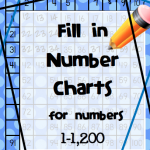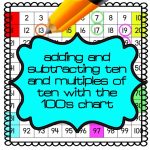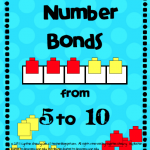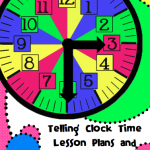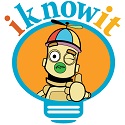Wish I Had Known About the Brain!
A couple of years in a row now my partners at other schools have begun the year teaching about the brain and mindsets. I was like, “Yeah, that sounds great.” BUT, I had already planned something else in my mind. They shared their lessons with me and they all revolved around this book…Your Fantastic Elastic Brain by Deak Ph.D., JoAnn and Sarah Ackerley.

Here is a brief sketch of what I did with my students in 1st and 2nd grades this year. These were three 30 minute enrichment lessons. Most of this I cannot take credit for since I didn’t write the lessons, but I adapted them for my own use.
Day 1: I read the first few pages of the book and we learned the parts of the brain here as we touched the parts of the brain on our heads, we talked about each part’s function. We did a coloring sheet in which students colored parts of the brain like are on this page of the book (sorry, but I am not at liberty to share the coloring page).

We also sang with this Story Bots You Tube song.
[embedyt] https://www.youtube.com/watch?v=Nnl7DLSNFV8[/embedyt]Day 2: We read the next few pages of the book and reviewed the parts of the brain. We acted out different scenarios which were pre-prepared (I didn’t come up with them on the spot in other words). Students had to guess which parts of the brain they thought were being used to perform the actions that the children were doing.
Day 3: We read the last few pages of the book, and made neurons with our arms, palms, and fingers. We talked about how electrical impulses travel down the neurons to tell the body what to do. Then I talked to students about how mistakes are the biggest teacher (reiterating what the book says). I brought up the idea of a growth mindset and a fixed mindset. I held a balloon and blew it up. I said this is like a growth mindset. I also held up a flat balloon and said this is a fixed mindset. Then I asked students what they could do to make it easier to blow up the balloon. I wanted them to tell me to stretch it (like their brain). From this point, I found a random fixed mindset/growth mindset poster on the internet and read it while holding the balloon. I had students check phrases they had said before on both the fixed and growth mindset side. This website has a good chart about characteristics of fixed and growth mindset patterns.
What I love when teaching about the brain and fixed/growth mindset is that in essence you are teaching children the power of choices to let their mind expand or stay stagnant. With my older students, I also discussed how when you let your mind go a certain direction over and over it makes a deeper pathway similar to when you walk on the grass a whole lot. I ask the students what helps the grass to stop being dead in the same spot. Students invariably are able to say that you stop walking on it and when the rain comes it grows back up. So it is with anyone’s brain. They stop thinking the worst and the grass grows back up. Their brain stops having that pathway.
I hope you get a chance to teach about the brain and mindsets in your classroom. You won’t regret it!
Hanitizer That Doesn’t Dry Out Your Hands?
Hanitizer is affectionately called so for students’ simple naming convention. A few years ago I tried out this hand sanitizer I’m about to tell you about and absolutely loved it. Now, of course, I have used all of the different types of hand sanitizer…Germ-X, the Kroger Brand, the deliciously wonderfully smelling Bath and Body Works brands, but they all left my hands feeling dry and cracked especially in the winter since they have alcohol in them…Well, enter the best hand sanitizer ever which fixed that problem. Thieves hand sanitizer made by Young Living. I have small ones for my purse and a large one at school.

After you use the hand sanitizer, it keeps your hands feeling soft and pleasantly scented. When I buy the large one, I use it to fill up my small bottles for my purse so that it is more cost effective. Pictured above is a small purse sized one. Also, even better is that it only takes a very small amount–smaller than a dime size to sanitize your whole hands. This sanitizer is made with essential oils, which is what naturally kills all the yucky germs, and it doesn’t have any harmful chemicals in it like normal hand sanitizers. Give it a try! You will LOVE it!
To get this hand sanitizer, just go here to YoungLiving.com and order. My sponsor and enroller number are 2600343.
How Can You Get Kids to Manage Time While Working on a Project {Giveaway}
I recently had my students do an extended project on Greek Mythology, but this idea could work for any subject. The students had to do several steps to get to the movie making part. They had to research different myths, gather details, make an outline, make a story board, make a costume, and make a prop. Then they had to learn the iMovie software, including how to edit, include a sound effect, and include music. In the end the students’ projects turned out wonderfully, BUT to get multiple students to work together and not fight without a project going ON AND ON, there has to be some sort of time limit. Students of the 9-10 year old range have to have some sort of deadlines.

I incorporated two methods to help them stay on target while working.
- As a class we talked about the due date before they had been working very long. We planned together on their student calendars different due dates for each part of the project to be done. Now these weren’t actual due dates. These were just dates to help students pace themselves.
- Next, I wrote each student group on a sticky note–one of those sticky- on-the-whole-back notes. Above the sticky notes, I placed the items that were necessary for them to complete (on white cards above). As a group finished the task I moved the notes along. This puts a little positive pressure on the kids to get finished with each item because they don’t want their names to be left behind on the wall. Above I blurred out their names for privacy.
Now go forth and do great projects!
Guess what! It is giveaway time!
GIVEAWAY DETAILS:
Prize: $100 Teachers Pay Teachers Gift Card
Giveaway Organized by: Kelly Malloy (An Apple for the Teacher)
Co-hosts: An Apple for the Teacher, Mrs Wenning’s Classroom, The Chocolate Teacher, A Plus Kids, Kamp Kindergarten, Samson’s Shoppe, Helping Kids Shine, TheBeezyTeacher, Kelly McCown, Catch My Products, The Cozy Crafty Classroom, Chocolate 4 Teachers, Jackie Crews, Star Kids, The Fun Factory, Sandra Naufal, The Best Days by Julie Santello, 180 Days of Reading, Roots and Wings, Globe Trottin’ Kids, Priscilla Woodard – Tasked 2 Teach, Ms. K, Glistening Gems, Josie’s Place, The Froggy Factory, Mickey’s Place, and Guide Teach Inspire.
Rules: Use the Rafflecopter to enter. Giveaway ends 5/13/19 and is open worldwide.
Are you a Teacher Blogger or Teachers pay Teachers seller who wants to participate in giveaways like these to grow your store and social media? Click here to find out how you can join our totally awesome group of bloggers!
a Rafflecopter giveawayHow Can You Manage Peer Help?
I am currently having my students make videos. This is the third year I have done so. I don’t mind students helping one another if one wants to be in the video while another holds the camera for the rest of the students. However, what I do mind is when the students seem to be spending too much time helping someone and then forget about themselves. Kind and caring kids seem to have this happen often. To help avoid anyone being taken advantage of, I made these time sheets. These would work for any task–not just video work. In the past I have also had that problem with students helping others with math problems
I have developed a solution to this problem, and you can have it here for free to help you manage your students, too! 🙂 At the top you tell students how many minutes they are allotted to help others and they keep track of the time they have helped others on the sheet. Have them keep this page in an easy to reach place, so they can easily pull it out when they are helping other students.

Essential Oils for Classroom Concentration {Win a $25 Credit}
I have an amazing offer for all of my oily teacher friends! Here is a guest post by Stacy from GotOilSupplies.com about how oils can help your children in the classroom or while studying. Got Oil Supplies has some absolutely beautiful pendant necklaces so that your child can be diffusing an oil all day long for maximum learning potential. They also have other amazing products! You must stop by to check them out! AND…you must sign up for a chance to win this $25 store credit from their website!!! 😀
I received some sample roll on bottles for mixing my own oils, and beautiful gold labels from Got Oil Supplies. I love how they have metal roller balls and how they are made with blue glass. I have never bought a bottle with a metal roller ball. They work so smoothly and so much better than plastic roller balls! They also came with these beautiful gold lids which match the gold labels–very classy looking! What’s great is that the price is a great value for the quality of the bottles!
Keep scrolling and reading to enter to win a $25 Got Oil Supplies Credit on the Rafflecopter below.
Essential Oils for School:
Unleash Your Potential with Aromatherapy
Essential oils are highly concentrated oils renowned for their therapeutic and medicinal effects. They’re naturally extracted from plants through a process called distillation. Distillation is done by heating or steaming a part or parts of a plant (such as leaves, flowers, roots, bark, or stems) until the essence is produced. The extracted essential oil retains the plant’s fragrance as well as its other natural properties.
Essential oils can be dispersed through an essential oil diffuser or can simply be applied onto the skin. Due to the high potency of these oils, they can provide healing effects to human body just as much as the plants from which they’re extracted. They’re antiseptic, meaning they’re a good choice against infection. They can also boost the immune system. Furthermore, they can be used to relieve asthma, vertigo, bronchitis, and headaches.
Perks for the Mind
But the most prominent benefit of essential oils lies in their effect on the human mind. The fragrance of essential oils contain true essences of plants; hence, they are best inhaled. They’re known to provide a lot of positive effects to the brain, from stress relief to learning enhancement, depending on the particular oil you are using. Since they are a great aid in brain function, a number of essential oils are found to be helpful for students.
Rosemary
The first essential oil that can aid in learning is Rosemary. Rosemary extract can improve your mood and brain performance. Its fragrance relaxes the brain and can, therefore, help you focus more. This essential oil is best when diffused during study time, whether in school or at home.
Peppermint
One of the biggest struggles during study time is when a lazy mood hits you. Good thing there’s peppermint – an essential oil with an energizing effect. Its minty aroma can make you feel cool and refreshed. Plus, it can also help enhance your focus. Diffusing peppermint essential oil after lunchtime is helpful, most especially when you need to study during that lazy hour.
Cedarwood
Among all essential oils, it’s cedarwood which can deliver the most oxygen to the brain. Oxygen is important to sustain active brain function; thus, the more oxygen gets sent to your brain, the better your mental capacity becomes. This is the reason cedarwood is strongly recommended during exams as it can keep you calm, focused, and alert – all at the same time.
Lemon
A sleepy mind is not a well-functioning mind; so, better use an essential oil freshly extracted from lemon. Lemon’s citrus scent can rejuvenate an otherwise sleepy spirit. It’s also known to provide an energy-boosting fragrance that aids in concentration. As a matter of fact, this particular scent has been found to aid in several cases of learning disabilities. Wake up to a fresh scent by diffusing a lemon essential oil during the morning and start your school day feeling energized.
Sandalwood
Sandalwood can help maintain healthy blood circulation in your brain. It can help enhance your memory and concentration. Its soothing aroma can also save you from the stress and anxiety you usually get the night before your final exams. This essential oil is best inhaled during review time.
Frankincense
Frankincense is commonly diffused to soothe stress and anxiety. Aside from that, it has also been found to calm a preoccupied mind, giving way for mental clarity. Hence, it’s usually best to use this oil when you need to improve your focus and thinking.
Blended Oils
There are also essential oils made from mixed extracts that provide synergistic benefits. Peppermint and wild orange blend is a good example. It combines the refreshing effect of peppermint and the uplifting scent of wild orange in one essential oil. A blend of rosemary, coconut oil, and lemon is also a great choice if you need enhanced focus and memory.
Another famous blend is the vetiver and cedarwood blend. The essence of this blend can both calm your mind and boost your thought processes. This blend is best inhaled during the morning.
Choose Carefully
While there’s no denying that essential oils are beneficial, you shouldn’t just grab the first ones you see. Keep in mind that these oils tend to vary in terms of purity – and of course, you’ll want to go for those made from the real thing, completely devoid of additives.
Why Won’t My Students STOP TALKING??!!
What do you do when your students talk too much? I know it drives you insane! Is there a way to curb this behavior without taking away a privilege from everyone–moving clips, taking away Dojo Points etc.?
I’m going to share with you what works for me. First I start out the year with an anchor chart like the one pictured here.

I review each of the five items on the chart. I have students practice acting like each of the five expectations on the chart. For example, I have them read the expectations with me. When we read number three I have the students whisper in their teams. When we read number four I have them practice using low voices in teams. We talk about how students’ bodies look when students are using soft voices–how their bodies are close together. I even have children practice raising their hands to ask a question. We discuss how a child waits to be called on before making any noise, how students don’t get called on when making “ooh, ooh, monkey noises” etc.
Now, what happens if children are talking too loudly while working? After I have given them a warning or two about the class volume, I have found this to be a simple solution. “Students, you have been talking too loudly. Because of this, we are going to sit in absolute silence for one minute. If after one minute no one has made a sound, you will be able to talk again in low voices. During that minute if one person makes a sound–even a whisper–I will start the one minute over.”
I hold to what I said, and the noise magically lowers. Sometimes it seems that children just needed a break from their conversation and noise level to readjust their volume. I hope these tips help you. It is never too late in the year to establish your expectations. Don’t give up if you are struggling with a talkative class. 🙂
How to Make an Easy, Reusable, No-Sew, Table Skirt
So last year I was going to make this beautiful table skirt with long strips of fabric tied around a piece of ribbon. I’m sure you have seen pictures on Pinterest. I stood in Jo-Anne’s fabric store for hours over the course of a couple of days debating over the best coordinating patterns and colors. I picked out some patterns with blues and greens in them to match my neon green door–seriously my door is painted neon green. Then time went by, and I found other things more important as I moved into my room. Hence, I never made the skirt. Feeling overwhelmed by cutting that many pieces of fabric strips in a straight line and hearing from another teacher how much work these skirts took…I decided to try something else.
Easy, no-sew, reusable fabric table skirt enters! I had noticed a teacher last year tack fabric to her desk with push pins and it stayed with no trouble. This teacher’s fabric just hung straight with not pleats, ruffles, etc. This gave me an idea! I measured the fabric to make sure I had enough to go around the front and sides of the table I wanted to cover. Instead of sewing a hem in the bottom, I folded it over and taped it with masking tape. It looks just like the hem had been sewn. No one will ever know the difference. Next, I started at one end of the table and put a thumbtack in the fabric and through the table. Most school type tables are made with particle wood and so a tack will push right through this.
If you double the fabric over itself about an inch then this makes nice pleats. I did this about every five inches. I wasn’t super precise with my measuring, but if you lay a yard stick down beside the edge of the table to measure, it works out pretty evenly.
 As you can see, the finished skirt is below. This fabric helps to really brighten up the room and gave me a ton of extra storage, which I really needed. This project took me probably less than two hours. The most time is spent measuring.
As you can see, the finished skirt is below. This fabric helps to really brighten up the room and gave me a ton of extra storage, which I really needed. This project took me probably less than two hours. The most time is spent measuring.
What’s great about this project is that I did no damage to the fabric. I didn’t sew the hem. I didn’t hot glue the hem. I didn’t even hot glue the fabric to the table. What does this mean? I can use this fabric over for another project like a bulletin board, a table cloth etc. if I ever want to.
So here’s the step by step process you need if you plan on adding a skirt to one of your tables.
- Measure the fabric to make sure you have enough to go around the sides of the table. If you want a pleat every 5 inches, then divide the total inches of the sides of the table you are covering by 5. This is your number of pleats. Then multiply this pleats number by 2. This gives you extra fabric to overlap when making your pleats. Add this number to the sides of the table you are covering. This should give you the length of fabric you will need to cover the table.
- I made the height of the fabric about 26 or 27 inches to hang enough to cover my junk. I made the official height 25 inches hanging from the edge of the table. The extra 1 or 2 inches gave me enough to make my masking tape hem. You could make your hem longer, but I really didn’t want to have it dragging on the floor for foot traffic.
- Start at the end of the table and tack in your fabric.
- Measure 5 inches (or however many inches distance you want your pleats).
- Overlap your fabric about an inch and place another tack on top of the overlapped fabric.
- Continue repeating this pattern until you make it to the end of the area you are wanting covered.

